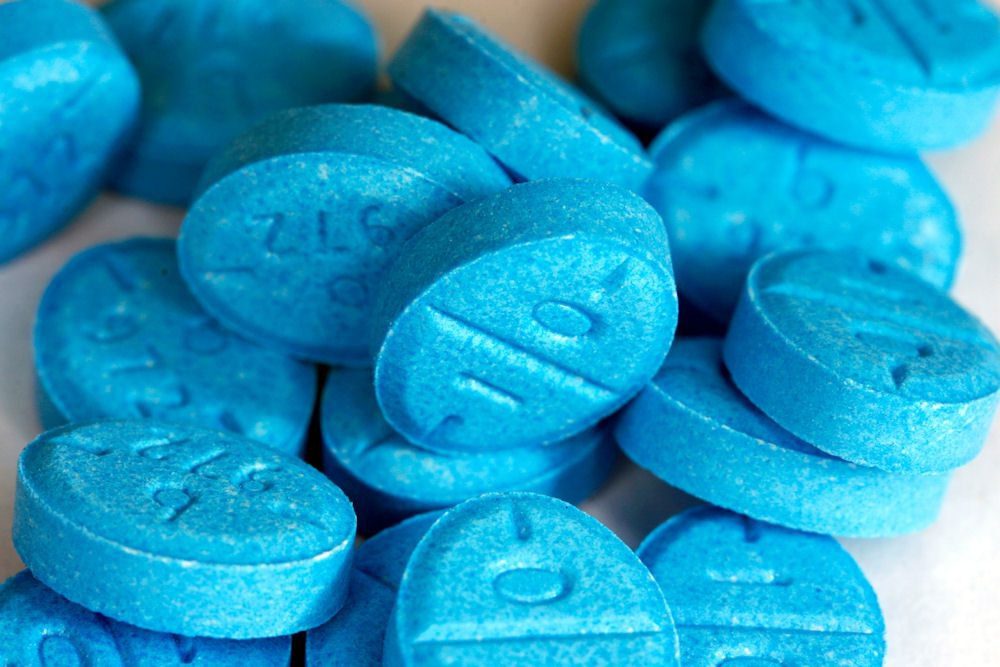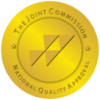Detox for Fentanyl in Illinois
Jump to Section
What is Fentanyl?
 Fentanyl is a powerful opioid that is similar to morphine, but it’s 50 to 100 times more powerful. Although it’s a prescription drug, it is also made and used illegally. Fentanyl is usually used to treat patients with severe pain, particularly after surgery, and for pain management for cancer patients. Fentanyl and other opioid dependence issues are common with long-term use. Our drug detox center in Illinois can help you deal withdrawal in a safe and comfortable manner.
Fentanyl is a powerful opioid that is similar to morphine, but it’s 50 to 100 times more powerful. Although it’s a prescription drug, it is also made and used illegally. Fentanyl is usually used to treat patients with severe pain, particularly after surgery, and for pain management for cancer patients. Fentanyl and other opioid dependence issues are common with long-term use. Our drug detox center in Illinois can help you deal withdrawal in a safe and comfortable manner.
Sometimes it is used to treat patients with chronic pain who have become physically tolerant to other opioids. (Tolerance is when you require a higher and/or more frequent amount of a drug to get the initial effects.) The brand names for fentanyl are:
- Actiq
- Duragesic
- Sublimaze
Opioids are a class of drugs found naturally in the opium poppy plant. Opioids may be made directly from the plant and others, like fentanyl, are made in labs using the same chemical structure (synthetic or semi-synthetic). At Northern Illinois Recovery Center, we offer a specific opioid addiction rehab program for individuals dealing with opioid abuse.
When it’s prescribed by a doctor, fentanyl may be administered as a shot, a skin patch, or as a tablet that can be used as a cough drop. Illegally used fentanyl usually associated with overdoses is made in labs. It is sold illegally as a powder, dropped onto blotter paper, put in eye droppers and nasal sprays, or made into pills that resemble other prescription opioids.
In addition, some drug dealers mix fentanyl with other drugs such as heroin, cocaine, methamphetamine, and MDMA (Ecstasy).
This is done because it takes very little fentanyl to produce a high, which makes it a cheaper option. This is extremely risky when the person using the drug doesn’t realize that they might be ingesting fentanyl as a cheap but dangerous additive. They may end up using stronger opioids than they are used to and are more likely to overdose.
What are the Effects of Fentanyl Use?
The same as morphine, heroin, and other opioid drugs, fentanyl works by attaching to the body’s opioid receptors. These are found in the areas of the brain that control pain and emotions. With continual use of opioids, the brain adjusts to the drug which reduces its sensitivity. As a result, it is hard to feel pleasure from anything besides the drug. The effects of fentanyl include:
- Drowsiness
- Extreme happiness
- Nausea and vomiting
- Confusion
- Constipation
- Feeling sedated
- Breathing problems
- Unconsciousness
How Long Do the Effects Last?
Because fentanyl is so much stronger than heroin or morphine, it takes the body longer to process and remove fentanyl than other short-acting opioids such as codeine, oxycodone, and morphine. However, since it is a short-acting opioid, it will create its effects and stay in the body for less time than long-acting opioids such as methadone.
The effects can last anywhere from 30 minutes to 3 days depending on how it was used and the amount of the drug used. How much and how it was used will determine:
- How soon it starts working
- How intense the effects are
- How long it lasts
- How long it stays in the body
How It’s Used
The way a drug is used has an immense impact on its effects and potential for addiction. When a drug acts quickly, it increases the chance of addiction. Injecting it into the body or smoking it allows the drug to reach the blood and then the brain quickly. Absorbing it through the mucous membranes in your nose or mouth is slower. Slower still is swallowing drug because it has to pass through the stomach, intestine, and blood before reaching the brain. When using fentanyl:
- Injection: Injected fentanyl can cause effects that last for between 30 minutes to 1 hour.
- Nose or mouth: Fentanyl absorbed through the nose or mouth can cause effects that last between 2 and 4 hours.
- Skin: Fentanyl that is absorbed through the skin through a transdermal patch can cause effects for 72 hours.
Fentanyl Detox in Illinois


The amount of time it takes to remove a drug from your system can’t be sped up. If you are addicted to fentanyl or think you may be addicted, the best thing is to talk to your doctor, even if you’ve been using it illegally. Fentanyl is a powerful opioid, and just suddenly quitting is dangerous. Addiction specialists or doctors can help you reduce your use over time. Generally, there are two main ways to detox, tapering, or stopping cold turkey.
In many cases, you can combine either method with prescription medicine meant to ease withdrawal symptoms or prevent relapse.
Most addiction experts warn against the cold turkey method, especially for:
- Fentanyl, heroin, oxycodone, and other opioids
- Benzodiazepines such as Valium (diazepam) and Xanax (alprazolam)
- Alcohol
The tapering-off period depends on how long you have used the drug and how much you’ve been using. With alcohol and heroin, you won’t be given the substance itself and weaned off it, but you will get prescription drugs that act the same in the body to help with the withdrawal symptoms.
The dose will typically be lowered over a period of several weeks or even a few months. If you’re severely addicted to any of the previously mentioned substances and try to quit cold turkey, there may be dangerous and severely uncomfortable withdrawal symptoms such as hallucinations, tachycardia (rapid heart rate), and seizures.
The symptoms of withdrawal from fentanyl detox can range from mild to severe physical symptoms that may begin within a few hours of the last dose. Fentanyl withdrawal symptoms can include:
- Bone and muscle pain
- Restlessness
- Sleep problems
- Diarrhea
- Vomiting
- Cold flashes and goosebumps
- Intense cravings
- Involuntary leg movement
- Anxiety
The timeline for fentanyl withdrawal can vary. It depends on:
- The way it was used
- Whether other substances were also used
- How long it has been used
- The person’s age
- How much they used
In general, the onset of withdrawal symptoms is 8 to 24 hours for short-acting opioids like fentanyl, and withdrawal symptoms usually last 4 to 10 days.
Risks During Fentanyl Withdrawal


Aspiration–Individuals in withdrawal may pass out and then vomit at some later time. This can cause choking or breathing stomach contents into the lungs (aspiration). This can also lead to lung infection in the form of pneumonia.
Dehydration–Dehydration and electrolyte imbalances can be caused by severe diarrhea and vomiting. Dehydration can lead to fainting and other complications if not treated.
Relapse and overdose–When a person is dependent on fentanyl and begins experiencing withdrawal, cravings and urges are very common. If the person starts using fentanyl again (even in smaller doses than usual) overdoses are more likely to happen because the person’s tolerance has been lowered significantly.
Signs of a Fentanyl Overdose
- Severely decreased or stopped breathing
- Blue skin and lip color
- Cold and clammy skin
- Noticeably constricted pupils
- Unresponsive to conversation
- Seizures
- Loss of consciousness
- Coma
Treating a Fentanyl Overdose
As mentioned, fentanyl is often mixed with other drugs like heroin, cocaine, and methamphetamine, complicating the task for first responders in identifying the cause of an overdose. In such cases, a drug addiction treatment in illinois emphasizes the importance of naloxone, a medication capable of treating fentanyl overdoses effectively when administered promptly.
Naloxone works by quickly attaching to the opioid receptors and blocking the effects of fentanyl. Because fentanyl is stronger than other opioid drugs it might require a number of doses of naloxone. If you believe that someone has overdosed, the most important thing to do is call 911 immediately.
Where You Can Detox
Drug addiction, also called substance use disorder (SUD), is a mental health problem. SUD has both psychological and physical effects. Because of this, detoxing on your own without any supervision is not a good idea, especially when detoxing from fentanyl.
Some residential or inpatient detox programs rely on peer support with some medical supervision. Others include round-the-clock medical monitoring. These programs help keep you medically stable while you taper off dangerous drugs. If you’re detoxing from opioids such as fentanyl, you may be prescribed methadone or buprenorphine.
The main benefit of an outpatient detox is being able to go home each day but still have professional support. Outpatient care might include medication to help the withdrawal process. Some people go to a treatment facility or a daytime program at a hospital
Fentanyl Detox at Northern Illinois Recovery Center.


After detox, a treatment program will give you the best possible chance at lifelong recovery. Depending on your needs, we have several treatment programs including:
- Residential Treatment
- Partial Hospitalization Program PHP
- Intensive Outpatient Program (IOP)
- Outpatient Program (OP)
People who enter the residential program live at the facility and have 24-hour supervision. The days are highly structured with classes, therapy, and recreation. PHP, IOP, and OP are all outpatient programs with different levels of supervision and time spent at the facility. Frequently, a person who completes a treatment program will “step down” to a lower level of care to continue their treatment.
In addition, we have a recovery coaching program that helps you stay on track through the difficult days of early recovery. It’s extremely important to have supporters who can help you develop strategies to cope with cravings and triggers. Early recovery is a time when many people tend to relapse.
Northern Illinois has the programs and the professionals you need to end the struggle and suffering from SUD. We know that nobody wants to be a drug addict. It is possible to turn things around and have that fulfilling life you wanted. Contact us today.


Licensed Physician and Surgeon
Dr. Beth Dunlap, a board-certified addiction medicine and family medicine physician, and is the medical director at Northern Illinois Recovery Center. She is responsible for overseeing all the integrated medical services at both campuses. Beth completed medical school, residency, and fellowship at Northwestern University, where she continues to serve on the faculty as a member of the Department of Family and Community Medicine. She has extensive experience in addiction medicine at all levels of care, and her clinical interests include integrated primary care and addiction medicine, harm reduction, and medication-assisted treatment.













